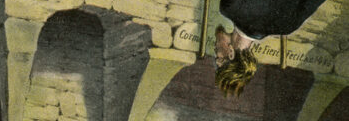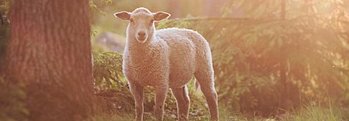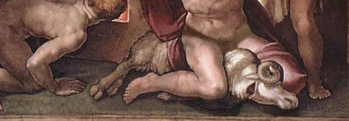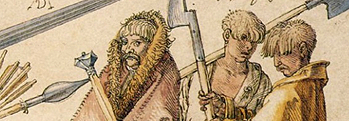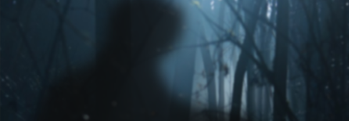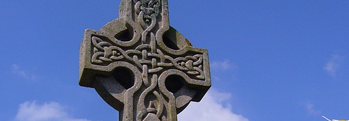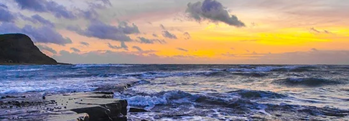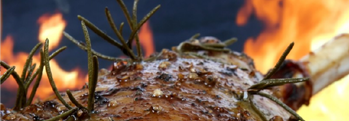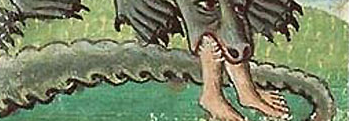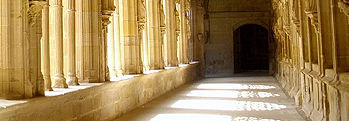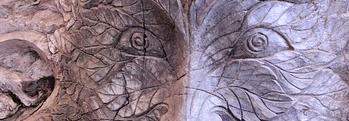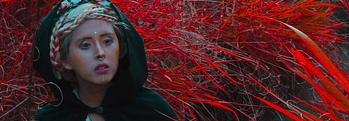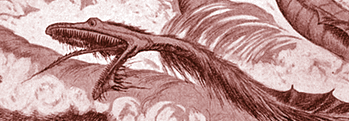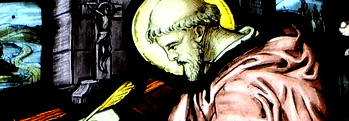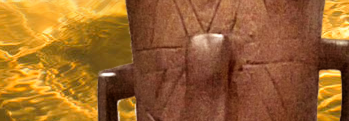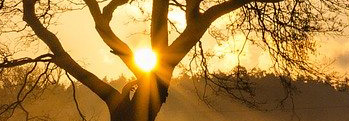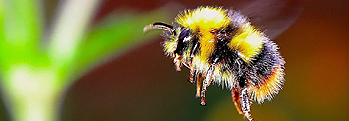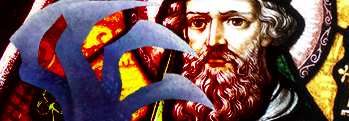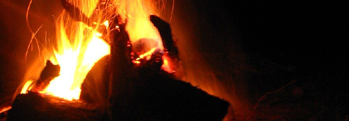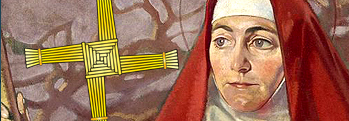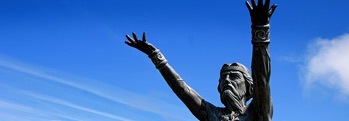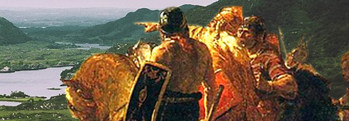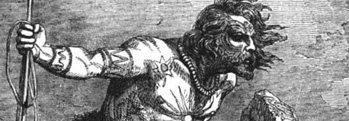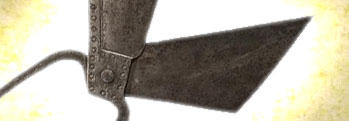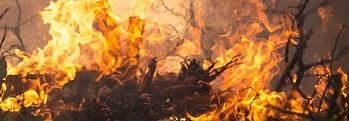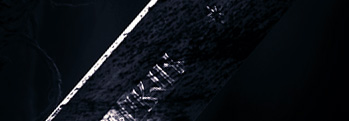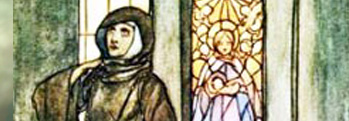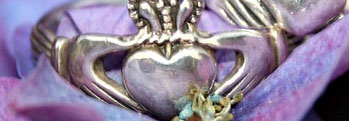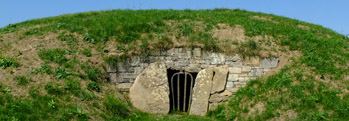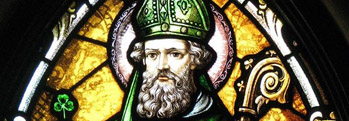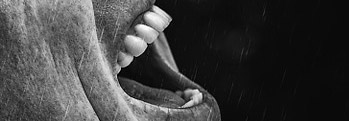The Spirits of the Gearagh
Irish and Celtic myths and legends, Irish folklore and Irish fairy tales from the Historical Cycle
The last of the great old forests of Ireland
 Ireland is full of strange little corners and odd byways that only a few know about, and one such is a mysterious place called the Gearagh, or An Gaorthadh, meaning the wooded river bed, in County Cork. Once it was part of the first forests in Ireland, home to verdant giants that grew after the great ice melted away, but now all that remains is a small patch, although still with its own secrets.
Ireland is full of strange little corners and odd byways that only a few know about, and one such is a mysterious place called the Gearagh, or An Gaorthadh, meaning the wooded river bed, in County Cork. Once it was part of the first forests in Ireland, home to verdant giants that grew after the great ice melted away, but now all that remains is a small patch, although still with its own secrets.
It can be found where the river Lee descends from the mountains and widens out in the flatlands below, that same river Lee said to have been formed by the lashing tail of a great fiery wyrm defeated by the mighty Saint Finbarr as Christianity spread across Ireland.
Until recently it was full of the oldest oak trees and the last full oak forest in western Europe, descended without interruption from primeval oaks which grew more than ten thousand years ago, the only remaining pure riverine forest. These flourished among an enormous maze of many-branching swift streams and small but deep rivers, wetlands and dangerous mud holes that could swallow a man whole – and his horse too!
The nature of this wild place made sure it was never deforested or turned to agricultural use, and even men of the law had a hard time chasing their quarry into its gloomy depths. It became a refuge for outlaws, highwaymen, and rapparees, which were Irish guerillas fighting the English occupation.
So secure was it as a hideaway that the illegal spirits brewed there by the likes of Jamsie Kearney, may God rest his soul, called poitín, gained quite a reputation for high quality!
The main risk in distilling this potent drink lay in moving it from the Gearagh to the local taverns and inns, for people say that the area is still haunted by meascán mearaí, mischievous spirits of a different sort! They would deliberately confuse and lead travellers every which way, so that no revenue officer might ever find what they sought within the boundaries of that most elder of forests.
A man would do well to be on good terms with the meascán mearaí before he set foot in that ancient place, lest he might lose himself and come to a sorrowful end! And just such a man was Finian O’Sullivan, who sent a young lad out with a barrel of his finest for delivery to a local farmstead.
Warned not to set foot in the Gearagh itself, he went on his way down the road but had the bad luck to meet the gauger on the road, one whose job it was to regulate liquors and beer. Caught out in the open, he thought quickly then doffed his cap and came forward with a smile on his face.
“Bless you your honour, I have a barrel of the finest for your cellars here!”
The gauger, being as bent as most officials of the time in Ireland were, gracefully accepted the bribe and slipped the young man a key from his pocket, telling him to give the key to his wife across town and that she should put this keg in the room with the other keg.
Tugging his forelock, the young man made his delivery to the farmstead as he had intended, then went to the gauger’s house and gave the man’s wife the key.
“Didn’t himself give me this key for you – he said you are to open the door this key unlocks and give me the keg within.”
She did just that, so he hefted the keg up on his shoulder and away he went to sell that one too!
Another famous inhabitant of this mysterious wilderness bridging ancient times and new was a fellow by the name of Seán Rua an Ghaorthaidh or na Gaoire, and little he cared if he got lost, for he would hide in there from British soldiers, so the more lost he was the better as far as he was concerned!
Yet the meascán mearaí, those spirits of confusion and befuddlement, must have smiled upon him for he even had a little house built up in one of the trees where he lived, in the eastern part, today called Illaunshaunroe – Oilean Seán Rua (Seán Rua's island).
He was a rapparee, one of those lone warriors who kept fighting the English colonists even after the great battles were lost. They would appear from thin air and vanish like smoke in the wind, leaving the ruin of British ambitions smouldering behind them.
Very like Robin hood was Seán, for he stole from the rich and gave to the poor people of the area, and he was known as the best shot in all the land.
When Hedges White, who owned Macroom castle, and some of his friends were dining within their fortress one night, Seán rode boldly up outside the walls when the bells tolled midnight and fired a shot from his gun through the narrow and distant window, quenching a candle on their table and scaring the living daylights out of them!
Not to be outdone, the English sent for an officer who was himself a famous shot, and enlisted him in the hunt for Seán. This officer boasted that should he catch sight of even a square inch of the famous rapparee he would have him, dead or alive.
The strange rivalry between the pair resulted in a two day pardon being granted to Seán so that he could meet his opponent in Macroom town square and test which of them was the better shot.
Hundreds and thousands thronged around the town on that day, and around two of the clock, who should wander in but Seán Rua himself, fully armed and masked with a cloth.
Then the trial began.
A crown piece was placed on the castle wall which was shot off by Seán and the officer in quick succession. Then a penknife was placed on the wall with a similar result. Seán then took a penknife from his pocket and placed it edge forward on the wall.
The officer took careful aim, fired, and missed by a narrow margin, but Seán Rua stepped up and casually fired quickly. The referee was astonished to find the bullet stuck in the board behind the knife, split evenly in two. He thus declared Seán Rua the winner, but Seán was no fool and trusted English promises as much as he should, so he stayed to collect neither accolade nor award, but vanished into the crowd which surged forward at his victory.
Some say his real name was O’Sullivan or Murphy, but alas today much of his home is open water, for in 1954 the area was flooded to provide an upper reservoir for two hydro electric power plants, resulting in over half of the original forests being cut down, leaving only an eerie landscape of blackened stumps when the water level is low.
Still though, the forest is returning and if the water was drained it would be restored to its full glory. Today many species of plant, animal and fish can be found there, as well as innumerable birds – wild garlic, Irish spurge which was used by poachers to stun fish, salmon, trout, otters, and many others.
But do the meascán mearaí still giggle and whisper among the leafy boughs? Well, I’ll let researcher Kevin Corcoran answer that one:
“One time I got lost and, no matter what way I went, half an hour later I’d come back to the same point.”
More Tales from the Historical Cycle
The gift of the gab, as it’s known, is a common thing among the Irish – being able to talk all day about anything and everything, and do it in a way that would have you listen as well. It’s as Irish as red hair and freckles. But what if you didn’t have the gift of the gab, or felt a deficiency of gabbiness? Never fear, al ... [more]
Ireland is full of strange little corners and odd byways that only a few know about, and one such is a mysterious place called the Gearagh, or An Gaorthadh, meaning the wooded river bed, in County Cork. Once it was part of the first forests in Ireland, home to verdant giants that grew after the great ice melted away, but now all that remains is a s ... [more]
Ireland at the beginning of the first millenium was a turbulent place, with many clans and kingdoms fighting among themselves, so that a Lord might be sitting comfortably one day but find himself fleeing for his life the next! And so it was with one of the greatest of Ireland's kings, Cormac Mac Art. Although he was by blood, law and custom ... [more]
On Martinmas eve, that is to say the 10th of November, it used to be the custom in many parts of Ireland to sacrifice an animal to Saint Martin of Tours! This tradition has only recently ceased, having been carried on well into living memory, as lately as the 1940s in some places. In poorer homes a goose, gander, duck or chicken was killed, whil ... [more]
It's true to say that music has a magic all to itself, for it can transport us to different places and times with the strumming of a few notes. It can make us feel angry, or sad, or happy, or any one of a myriad of other emotions. But if you were to hear the music of an occult Sidhe instrument played by one of the fairy folk under a loon's ... [more]
King Cormac Mac Airt was one of the mightiest kings of Ireland, known and well known for his wisdom, but after he lost an eye in a battle with the Déisi, he had to step down, for the solemn law was that a king must be without blemish. His son Cairbre came to him to ask his advice before in turn being crowned king. “O Cormac, grandso ... [more]
"Crom Cruach and his sub-gods twelve," Said Cormac "are but carven treene; The axe that made them, haft or helve, Had worthier of our worship been. "But He who made the tree to grow, And hid in earth the iron-stone, And made the man with mind to know The axe's use, is God alone." Anon to priests of Crom was ... [more]
Most people with an interest in Irish mythology and legends will have heard of the great tale of the Táin Bó Cúailnge, which tells of the heroic deeds of Cú Chulainn as he resisted and gave battle single handed to the armies of Queen Medb. What most don't know is that the ancient tale was once all but lost, for th ... [more]
One of the most legended and powerful relics of ancient Ireland was the Cathach, or battle-book of St Colmcille, who was also known as St Columba. A Cathach was really any sort of sacred or magical artifact, and great was the strife between the tribes and clans of Ireland to gain ownership of them! The psalter or prayer book of Saint Colmcille w ... [more]
Three was a sacred number to the people of ancient Ireland, bearing with it a hint of magic and the sacred, and this belief carried through to their spiritual practices, which occasionally included human sacrifice! Most cultures throughout history have at one point or another practised some form of human sacrifice, and lurid tales passed down fr ... [more]
Saint Colman was a famous Saint in early Irish Christianity, being born a prince not long after Saint Patrick brought the faith to Ireland in the first place. Despite his royal lineage however, his birth was no easy matter, for the druids had prophecised darkly that he would be a great man and surpass all others of his clan! His pregnant mother ... [more]
The old pagan times in Ireland were fraught with peril for even the mightiest warriors, with chieftains and tribes going to war often and for many reasons – pride, hatred, love and greed! And so it was with the fierce King Conall Collomrach. Little is known of his exploits, but his reign was brief and his end was violent, leaving behind only ... [more]
This now is the true tale of mighty King Cathal Mac Finguine of Munster, lord of Cork and warrior without peer. In ancient Ireland this story was told when mead was first brought out, or a prince sat to his feast, or when an inheritance was taken, and the reward for reciting this story was a white-spotted, red-eared cow, a shirt of new linen, or a ... [more]
The river in Meath which we today know as the Delvin, that very same river which flows into the Irish sea in Gormanstown, was not always called so. In the time of Kings it was called Inbher Oillbine, and this is the grim story of how it got that name. There was a prince who lived near to the mouth of the river, and his name was Ruadh Mac Righdui ... [more]
The boy who was to be Saint Colman was born in the northern kingdom of Dalriada, which held both Northern Ireland and Scotland in its power at the start of the sixth century. This was the time of the dawn of Christianity in Ireland, and it was a time when great terrors and monsters from primordial epochs still swam in the deep lakes and lazy rivers ... [more]
Most people have heard of Ireland's famous title, “The Island of Saints and Scholars”, and the reason it was so well known was because of the many fine Irish Catholic universities and colleges that preserved and spread learning throughout Europe. Of them all, there were few finer than the one in Howth, and so wonderful was its reput ... [more]
Very often here in Ireland we walk past the most astonishing buildings, carven stone high crosses, ancient temples and many similar things, but rarely do we wonder who built them. Well as it turns out, legend has it that a surprising number of them were built by a man called Gobán Saor, whose name means “Gobán the Builder,&rdquo ... [more]
I. Once upon a time there was a High King in Ireland by the name of Conn the hundred-fighter, for so many battles had he fought and won to gain his kingship. At the end of his reign was Fionn Mac Cumhaill born. Long was Conn's lineage, although I won't trouble you with the details, but he reigned at Tara of the Kings as Lord of all Irela ... [more]
In the time of High King Lugaid Luaigne, that is around the age when Fionn Mac Cumhaill and his Fianna fought in defence of the great land of Ireland, a dispute arose in the northern Kingdom among the men of the Ulaid, for instead of there being only one king of Ulster, there were two! Well, as anyone who knows anything about kings will tell you ... [more]
St Colmcille is one of the three patron saints of Ireland, and his life is the subject of story and legend. It was by his efforts that Christianity spread not only through Ireland but also Scotland, England and parts of Europe too! He was a tall and powerfully built man with a rich and melodious voice which, it was said, could be heard from one hil ... [more]
From the earliest times and in every corner of the world, mead was held in reverence. This sweet tasting fermented honey drink was especially loved by the ancient Irish, who shared fireside stories about rivers of mead in mystical lands over the edge of the ocean's horizon, ruled by Mannanan Mac Lír, and even in the place where the dead ... [more]
Ancient are the hills and mountains of Ireland, and ancient are her trees, something that the old people who lived here knew well. To them a tree was a mystical thing with its roots reaching down into the underworld of the sidhe mounds, and its branches lifting up high into the heavens towards the sun, moon and stars. Well over ten thousand places ... [more]
The Irish bee has been a beloved part of the culture and folklore as long as there have been people in Ireland, producing honey for cakes and mead as well as beeswax which has no end of uses. Many's the warm summer evening has been filled with their gentle humming above the beautiful flowers they help to pollinate. And yet for all that, old ... [more]
As Saint Patrick travelled across Ireland, spreading Christianity and the light among the pagan tribes, he saw many wonders and defeated many evils, but always more rose up to challenge him. So he took himself to prayer and saw a vision that he should travel to Croagh Patrick – although it was not so known at that time – and spend the L ... [more]
The shifting shadows of pagan times held sway over Ireland when the High King was a man known as Laoghaire, famed for his merciless fury and great strength, and he sat upon the seat of the High Kings in Tara. But unknown to him, Saint Patrick had landed in a little boat at Colpe in the Boyne estuary, travelling to a place called Ferta fer Feic, or ... [more]
One of the three patron Saints of Ireland, along with Patrick and Colmcille, St Brigid of Kildare was a devout Catholic in the very first days of the faith in Ireland. Her feast day is the first of February, which previously had been the pagan festival of Imbolc, halfway between winter and spring. Brigid herself was the daughter of a baptised Ch ... [more]
Through many an ancient legend and tale rings the name of the fierce and powerful druid called Mogh Ruith, meaning “slave of the wheel”. Older legends make him out to be the king of the Fir Bolg, or a druid gifted with many lives by the fairies, or that the name was but a title passed down through generations. Some say he had one eye ... [more]
Ireland has had many high kings, some were wise and kind and others cruel and the holders of grudges, but there were few as great as High King Cormac Mac Art, grandson of Conn of the Hundred Battles and son of Art and Ectach, the daughter of a mighty blacksmith. In his youth he stayed at the hall of the king of the north, Fergus Dubhdedach, but ... [more]
Back in the days of old Ireland when legends walked the earth, before the light drove back the shadows of ancient aeons, the word of a bard was much feared, for the people had no writing, so all of their culture and histories were held in songs and poems by bardic masters. As you can imagine even the mightiest were wary of getting on the wrong s ... [more]
In ancient days there was an Irish King whose name was Labraid Lioseach, known also as Labraid the Sailor for a long voyage he took into fairy seas, and when he came back from that voyage he was never seen without a deep hood over his head, except by one man. That man saw him once a year to trim his hair, and after the King's hair was cut, t ... [more]
It was the custom in Ireland of old to lay geases upon champions, heroes and warriors. These were magical forbiddings, deeds they must not do or disaster would follow, and no disaster fell so hard upon a man who broke his geases as upon Conaire Mor! His mother was a woman of the Sidhe called Etain, who had been married to King Eochaid, but disco ... [more]
Tierna the Historian was one of the many chroniclers and monks who wrote the tales of ancient Irish legends, telling us of strange and notable events in the almost forgotten past, the deeds of heroes and kings, and in one case, the disappearance of the High king himself! For it was by Tierna's hand we know that High King Cormac went missing for ... [more]
In the time between the Tuatha Princes and St Patrick, there rose over the people of Ireland mighty High Kings, who held power by force of arms, wit and wisdom. One of the greatest among them was Cormac of the wide purple cloak, whose hair was as golden as the heavy torc around his neck, with teeth like a shower of pearls and skin as fair as snow. ... [more]
Long ago when the fierce Milesians invaded Ireland and defeated the De Danann after many wars and battles, despite their sorceries and all their courage, skill and sciences, the folk of Danann made for themselves eldritch amulets and charms by which they and all their possessions became invisible to mortals, and so they continued to lead their old ... [more]
The Tailteann games were a grand affair in Ireland once upon a time, every bit as celebrated and renowned as the Olympics are today. Having their roots thousands of years earlier, in the time of the Tuatha Dé Danann, lakes were made and gigantic fires were lit during Lughnasadh, the summer feast in July. Druids and poets would compose cea ... [more]
The Claddagh Ring is one of those well known emblems of Ireland that most people recognise, but how many know the stories behind it? Many's the young man has gifted one to his lady, giving his heart along with it, as did the ring's original maker. Back in the seventeenth century there was a young Irish lad by the name of Richard Joyce, w ... [more]
Ah Tara, Temair of old, seat of more than a hundred High Kings of Ireland for better than a thousand years, home to the royal lines of Cormac and Tuathal, where is your wisdom and beauty? Where are the mighty warriors and poets who once danced in your halls? Why now do cattle and livestock graze where the mighty Fionn faced the Tuatha sidhe with a ... [more]
On Easter Sunday morning, in anno domine 433 it was that Patrick came face to face with the beating heart of the old religion at Tara, and did battle with the Druids. Although some might dispute the miraculous nature of the events that took place on that day, few argue they didn't happen, so take from that what you will! Laeghaire the king a ... [more]
Brian Boru was one of the greatest High Kings of all Ireland, a Christian king whose small dynasty challenged and broke even the power of the O'Neills, who had ruled Ireland from time immemorial. He rose to prominence at a time when the cruel Norseman was pillaging the lands of both Ireland and England, slaughtering and slave-taking, barbarians ... [more]
King Suibhne was master of the northern land of Dalriada in Ulster, and a grim and fierce king he was too, yet fair to behold like palest snow, with deep blue eyes. A mighty master at arms, he was called to war often, but latterly to the bloody battle of Moy Rath. As he readied himself he heard in the distance a church bell ringing, and no man of G ... [more]




